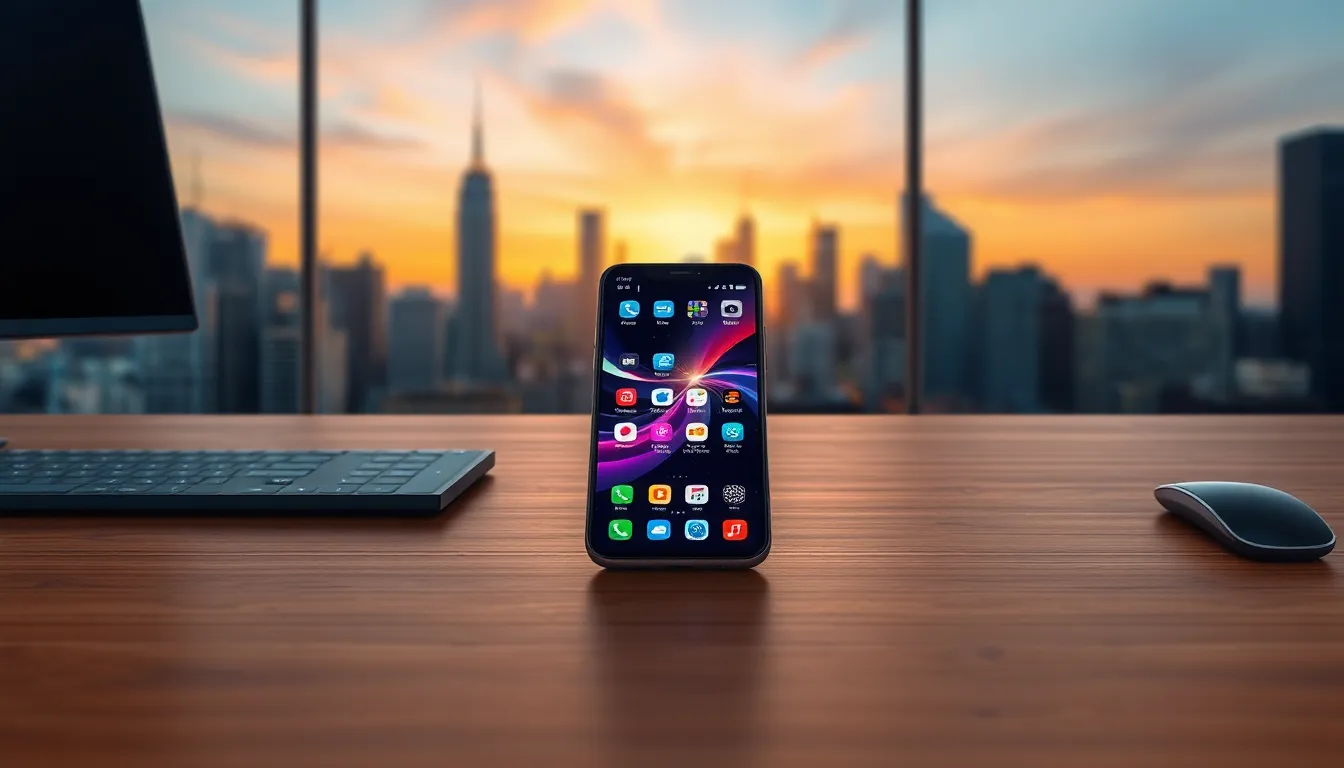Table of Contents
ToggleIn a world where your phone is practically an extension of your arm, the mobile phone market is buzzing louder than a caffeinated bee. With each new model boasting features that could make even James Bond jealous, consumers are faced with a dizzying array of choices. It’s not just about calling your mom or scrolling through cat memes anymore; it’s about finding the perfect device that fits your lifestyle, budget, and, let’s be honest, your Instagram aesthetic.
Overview Of The Mobile Phone Market
The mobile phone market has transformed significantly, with smartphones playing a critical role in everyday life. Consumers find an extensive array of options, impacting their purchasing decisions.
Current Trends
5G technology adoption gains momentum, enhancing mobile connectivity. Foldable smartphones attract attention for their innovative designs. Sustainability trends rise as brands focus on eco-friendly materials. Artificial Intelligence integration improves user experiences through smarter features. Subscription services expand, allowing users to access devices without upfront costs.
Market Growth Factors
Increasing smartphone penetration fuels market growth, particularly in emerging economies. Rising disposable incomes enable consumers to spend more on advanced features. Demand for mobile internet drives upgrades to 4G and 5G devices. Rapid technological advancements encourage consumers to seek the latest models. Competitive pricing strategies from manufacturers create accessibility for various customer segments.
Key Players In The Mobile Phone Market

This section highlights the dominant entities and new competitors shaping the mobile phone landscape.
Major Manufacturers
Leading brands define the mobile phone market by offering innovative devices. Apple, known for its premium iPhone line, continuously sets trends with advanced technology and user-friendly interfaces. Samsung stands out with a diverse portfolio, including flagship Galaxy smartphones and budget options. Huawei, despite facing challenges, remains influential due to cutting-edge hardware and competitive pricing. Xiaomi captures attention with its value-driven approach, attracting price-sensitive consumers. Google, while smaller, offers unique features through its Pixel lineup, focusing on software integration and camera capabilities. These major manufacturers maintain a significant share of the market by consistently pushing boundaries and exceeding customer expectations.
Emerging Brands
Emerging brands reshape the mobile phone market by introducing fresh concepts. OnePlus gained recognition for combining high-end features with reasonable pricing. Realme appeals to younger audiences with stylish designs and competitive specs. Oppo fosters innovation through innovative camera technology and fast charging solutions. Vivo emphasizes multimedia experiences, particularly in photography and gaming. Additionally, brands like Motorola and Nokia leverage nostalgia while adapting to modern demands. These emerging players challenge established brands, promoting diversity and enhancing consumer choice in the mobile phone industry.
Consumer Preferences And Behavior
Consumer preferences in the mobile phone market reflect diverse priorities and behaviors. Pricing and features play significant roles in shaping these choices.
Price Sensitivity
Price sensitivity remains a dominant factor for many consumers. Research indicates that more than 60% of smartphone buyers consider price above all else. Consumers often seek budget-friendly options, especially in emerging markets. Competitive pricing strategies from manufacturers foster this trend. Brands frequently offer devices at various price points, accommodating different economic demographics. Many users prefer entry-level or mid-range models that deliver essential functions without excessive expenditures. Keeping prices reasonable helps attract a broader range of customers.
Feature Prioritization
Feature prioritization influences consumer decisions significantly. Users often gravitate toward devices showcasing strong camera capabilities, robust battery life, and user-friendly interfaces. Studies show 80% of millennials emphasize camera performance when selecting a mobile device. Additional features such as 5G compatibility, storage capacity, and brand reputation also weigh heavily in their choices. Furthermore, eco-friendly materials increasingly draw interest among environmentally conscious consumers. Brands addressing sustainability often enhance their appeal within the market. Ultimately, the combination of these prioritized features shapes consumer preferences.
Technological Innovations
Technological advancements significantly shape the mobile phone market. Innovations in connectivity and sustainability continue to capture consumer attention.
5G Technology
5G technology marks a major shift in mobile connectivity. It offers speeds up to 100 times faster than 4G, enhancing streaming and gaming experiences. Analysts predict that by 2025, over 1.7 billion mobile connections will use 5G networks. Many consumers are excited about the potential of smarter devices, with applications in augmented reality and smart cities. As a result, manufacturers prioritize 5G integration, ensuring the latest models support this high-speed network. Major telecommunications companies worldwide are investing heavily in infrastructure, aiming to cover vast areas and enhance user experience.
Eco-Friendly Devices
Eco-friendly devices gain traction in today’s mobile phone market. Demand for sustainable materials rose sharply, reflecting consumer preferences. Reports show that 70% of smartphone buyers consider environmental impact important. Manufacturers respond by creating phones from recycled plastics and sustainable materials. Innovations like modular designs enable easier repairs and longer product life. Companies highlight green initiatives, appealing to eco-conscious consumers. Additionally, brands committing to carbon neutrality see increased customer loyalty, demonstrating that sustainability is a determining factor in purchasing decisions.
The mobile phone market continues to evolve rapidly as technology advances and consumer preferences shift. With the rise of 5G connectivity and a focus on sustainability, manufacturers are adapting to meet the growing demands of eco-conscious consumers. The competition among established brands and emerging players fosters innovation and diversity, ensuring that users have access to a wide range of options tailored to their needs.
As affordability remains a key factor for many buyers, the industry is likely to see ongoing efforts to provide high-quality devices at various price points. This dynamic landscape promises exciting developments for smartphone enthusiasts and casual users alike, making it an intriguing space to watch in the coming years.





